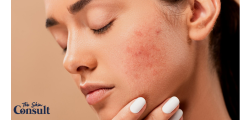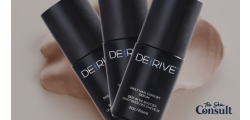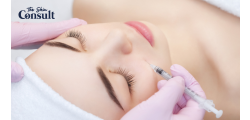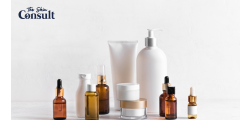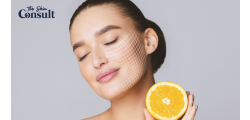Be sun-ready with SPF year-round!
With summer heading into full swing, conversation about SPF is at an all time high. You may have heard many myths and assertions revolving around sunscreens, but it’s important to decode the science behind them. We all know that the ultraviolet rays from the sun can cause skin damage and skin cancer -- regardless of age, skin type, and season.
Mostly, we think of this danger during the summer when at the beach or outside more often. However, this risk is still present even when it’s cold outside. The winter months bring their own increased risk of sun damage. If you live somewhere with snow and ice, the harmful sun rays are reflected off these surfaces, intensifying the rays. The ozone layer is also thinner in the winter, decreasing its level of sun protection. Daily application of a sunscreen with an SPF of at least 15 has been proven to reduce the risk of skin cancers and prevent photodamage all year round1. The ozone layer combined with SPF application forms somewhat of a “double layer” protection against the sun, so one can see how that protection diminishes when the ozone layer becomes thinner.

Now that we understand the importance of sunscreen, what kinds of sunscreens are available?
There are two big categories of sunscreen: chemical and mineral. Chemical sunscreens work by absorbing UV radiation and converting it to thermal energy. Ingredients in chemical sunscreens in the U.S. include ensulizole, octisalate, homosalate, octocrylene, octinoxate, oxybenzone, and avobenzone. Mineral sunscreens act as a physical barrier on the skin that reflects and scatters the UV rays, thus they are also known as physical sunscreens. Ingredients in mineral sunscreens include: zinc oxide (ZnO) and titanium dioxide (TiO2)1. Both of these sunscreens are available in a variety of forms like creams, gels, lotions, ointments, butters, sprays, powders, and more. As sunscreen has risen in popularity and its importance has become apparent to the general public, more widely available. Sunscreens are now often included in cosmetic products such as moisturizers, foundations, shampoos, and lip balms.
So, should we use chemical or mineral sunscreens?
Chemical sunscreens have traditionally been the most widely used. Recently, concerns arose over the safety of chemical sunscreens due to its ability to irritate your skin, especially if you are sensitive. Alternatively, mineral sunscreens provide a more natural option. The active ingredients in mineral-based sunscreens provide effective broad-spectrum coverage and are more tolerable for sensitive skin.
There are multiple benefits to using mineral sunscreens. They are safer for the environment, gentler on the skin, and zinc oxide has anti-inflammatory properties. This zinc oxide may help with the inflammation of acne and reduce the redness of acne scars. Most of the newer formulations of mineral sunscreens use nanoparticles. These nanoparticles help with easier application, improved aesthetics, and carry a very low risk of toxicity1. One in particular we love is mineral sunscreen with moisturizing properties and it's suitable for all skin types, making it perfect for everyday use.
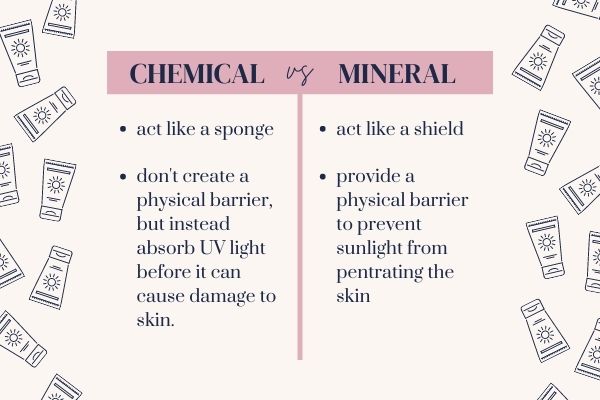
All of this information is interesting, but does sunscreen make that much of a difference?
A study published in 2013 in the Annals of Internal Medicine journal by Hughes et al. found that the study group who used sunscreen daily showed no detectable skin aging after 4.5 years. That group also had 24% less skin aging by the end of the trial than the study group that used sunscreen at their discretion.
Not only does consistent and correct sunscreen usage decrease the risk of non-melanoma and melanoma skin cancers, but it’s also been associated with delaying and preventing skin aging. Additionally, mineral sunscreens carry a lower chance of allergic reaction and environmental damage compared to chemical sunscreens. Mineral sunscreens provide an attractive and effective choice for consumers who desire an alternative option for sun protection.1 Whether you use chemical or mineral sunscreens, it’s essential to use a daily sunscreen, even in the winter.
What is SPF vs PA?
SPF stands for Sun Protection Factor, it helps in measuring UVB protection. On the other hand, PA ratings are a measure of UVA protection. UVA is what protects us against radicals, and is what ages us. On the other hand, UVB is what causes skin cancer. A product with the label "broad spectrum" would block both UVA and UVB rays. Korean sunscreens list sun protection with PA scores, while in the US we see SPF scores on sunscreens. However, both are important scores to measure how well a sunscreen can protect us from UVA and UVB rays. Decoding these terms eradicates the false sense of security that some people have begun to associate with higher SPF ratings.
A sunscreen with an SPF 15 blocks about 94 percent of the UV, SPF 30 products block about 97 percent of such rays, and SPF 45 sunscreen shields against about 98 percent of rays so those that have much higher numbers are not really providing much extra.
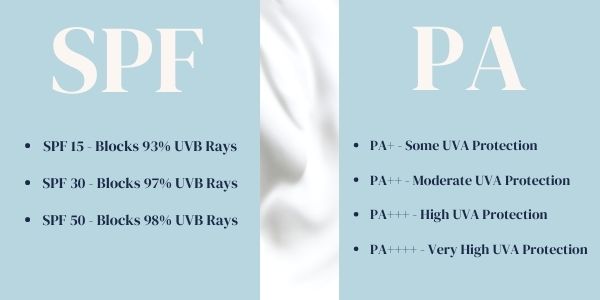
UVB rays are responsible for producing sunburn. The UVB rays also play the greatest role in causing skin cancers, including the deadly black mole form of skin cancer (malignant melanoma).
UVA rays also play a role in skin cancer formation. In addition, the UVA rays penetrate more deeply into the skin and play a greater role in premature skin aging changes including wrinkle formation (photoaging). There are approximately 500 times more UVA rays in sunlight than UVB rays. Therefore, in addition to protecting your skin from the effects of UVB rays, it is also very important to protect from the damaging effects of the more numerous UVA rays. Traditional chemical sunscreen products have been more successful at blocking UVB rays than UVA rays.
How should we incorporate sunscreen in our daily skin regimen?
The skincare market is flooded with a variety of sunscreens ranging from sunscreen for sensitive skin to sunscreen for acne-prone skin, and everything in between. The American Academy of Dermatology currently recommends choosing a sunscreen that has a SPF rating of more than 30 and has broad-spectrum coverage. Depending upon the formula of sunscreen, the direction of use may vary, so it’s important to always read your labels properly.
It can be confusing to decide what products to apply and what order to apply them in. However, a skincare routine can be simple. Read our previous blog on how to create a simple routine here As a general rule of thumb, go from light to heavy products after cleansing your face. Always remember that using more than one SPF product like SPF moisturizer, SPF powder, etc., and layering them up will not give you any cumulative protection. For example - layering up SPF 15 and SPF 30 doesn’t mean you now have SPF 45 protection.
To fully get the benefits of sunscreens, SPF should be applied at least 15 mins before sun exposure to all sun-exposed parts, and when you are outdoors, make sure to re-apply it every 2 hours. Most adults require 1 ounce of sunscreen to cover their entire body.
If you are a makeup lover who applies foundations, contour, and highlighter, the thought of reapplying sunscreen after every 2 hrs can raise questions - won’t this mess up your makeup? In this case, a sunscreen powder or a sunscreen spray can be a game-changer. And if you have acne-prone skin then we recommend this particular sunscreen designed for acne prone skin.
Does the application of sunscreen influence your vitamin D levels?
Our body requires sunlight for the synthesis of the important nutrient vitamin D. So some might question, if sunscreens reduce the overall UV exposure - wouldn’t this prevent you from getting vitamin D? Luckily, studies suggested that using sunscreen daily with high UV protection doesn’t compromise vitamin D synthesis.
A few studies claim that when sunscreen is used along with other sun protection clothing, then chances of developing a vitamin D deficiency may rise. Therefore, this topic is often debated. We want to protect our skin from harm, but also need these vital nutrients. There isn’t a ton of information on this topic, so hopefully in years ahead studies will be carried out to address this conflict of interest. Until we get a clear-cut answer, try to include vitamin D-rich foods like spinach, salmons, and vitamin D-fortified milk to get your required vitamin D while not putting your skin at risk.
Looking to get started with an evidence based sunscreen? Shop some of our favs HERE!
Sources:
- 1. Solish N, Humphrey S, Waller B, Vanderveen S. Photoprotection With Mineral-Based Sunscreens. Dermatol Surg. 2020 Dec;46(12):1508-1513. doi:10.1097/DSS.0000000000002478. PMID: 32541340.
- 2. Hughes MC, Williams GM, Baker P, Green AC. Sunscreen and prevention of skin aging: a randomized trial. Ann Intern Med. 2013 Jun 4;158(11):781-90. doi: 10.7326/0003-4819-158-11-201306040-00002. PMID: 23732711.



